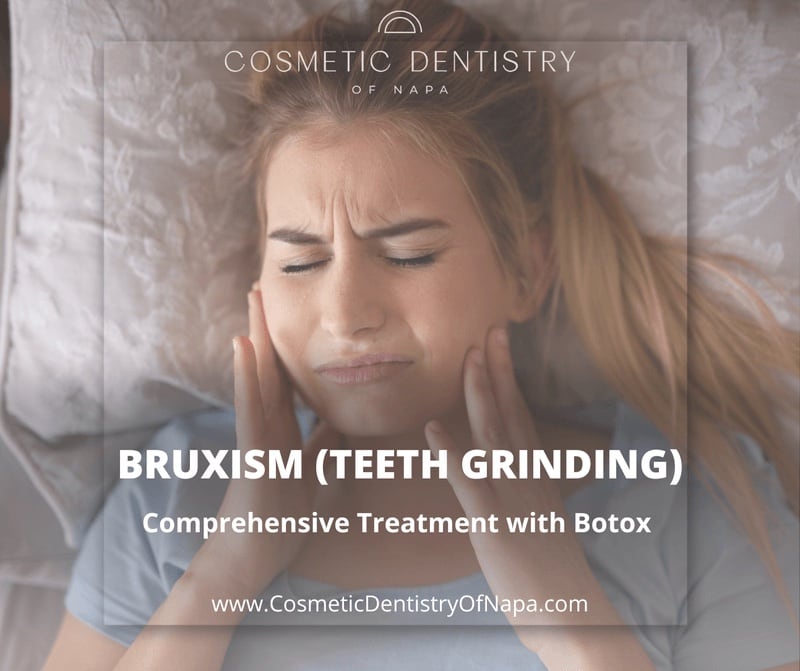Therapeutic Botox for Bruxism (Teeth Grinding) From A Napa Dentist

Bruxism (teeth grinding) is a dental condition that affects millions of people worldwide. It is characterized by involuntary clenching and grinding, which may cause significant damage to the teeth and jawbone, including chips, cracks, bite dysfunction, jaw joint pain, tooth sensitivity, and headaches.
Cosmetic Dentistry of Napa is credentialed by the American Academy of Facial Esthetics to provide Botox treatment as part of a comprehensive treatment plan for teeth grinding, TMJ disorders, and other oral health conditions.
What causes bruxism?
Bruxism is most commonly caused by:
- Stress or anxiety
- Improper bite mechanics
- Sleep apnea
- Jaw muscle weakness or overactivity caused by injury, stroke, arthritis, or other medical conditions
- Smoking or excessive alcohol consumption
How does Botox work to address bruxism?
Injecting small, therapeutic doses of Botox into the jaw muscles (masseter muscle) causes the muscles to relax temporarily. This relaxation reduces tension and helps prevent grinding or clenching your teeth, which may result in improved sleep and better preservation of your teeth, jaw, and other oral health structures and functions.
How many units of Botox are needed to treat bruxism?
The amount of Botox required to treat bruxism is dependent on several factors, including:
· Your age and overall health
· How long you have had bruxism (teeth grinding)
· The severity of the symptoms, including pain or damage to your teeth and jawbone
Benefits of treating bruxism with Botox
Botox can help release jaw tension, resulting in improved sleep, reduced pain, and relief from other symptoms caused by bruxism. It is also safe and effective, with only a few potential short-term side effects. Other benefits of treating bruxism with Botox include:
· Non-invasive with no downtime, so that you can continue with your daily routine
· A cost-effective adjunct to other comprehensive treatments to help alleviate teeth grinding, TMJ disorders, and headaches originating from the jaw area
How long can it take for Botox to work on your jaw?
Therapeutic effects are typically seen 10-14 days after treatment and may last up to 3-4 months. A follow-up appointment may be recommended after 2-4 weeks to ensure that the dosage is correct, and that the treatment is effective.
What is the best way to stop clenching and grinding your teeth?
Botox is not a permanent solution for teeth grinding. However, Botox injections in the jaw muscles can be part of a comprehensive treatment plan that includes a mouthguard and other therapies, including a thorough assessment of your bite mechanics to help mitigate symptoms and prevent worsening of teeth wear and tear, and other oral health problems. A mouthguard may help prevent tooth and bite damage, but it will not stop the grinding and clenching. The best treatment for teeth grinding is typically a combination of modalities.
Contact Cosmetic Dentistry of Napa today to get started. Call 707-257-7771 or conveniently fill out our online contact form.


